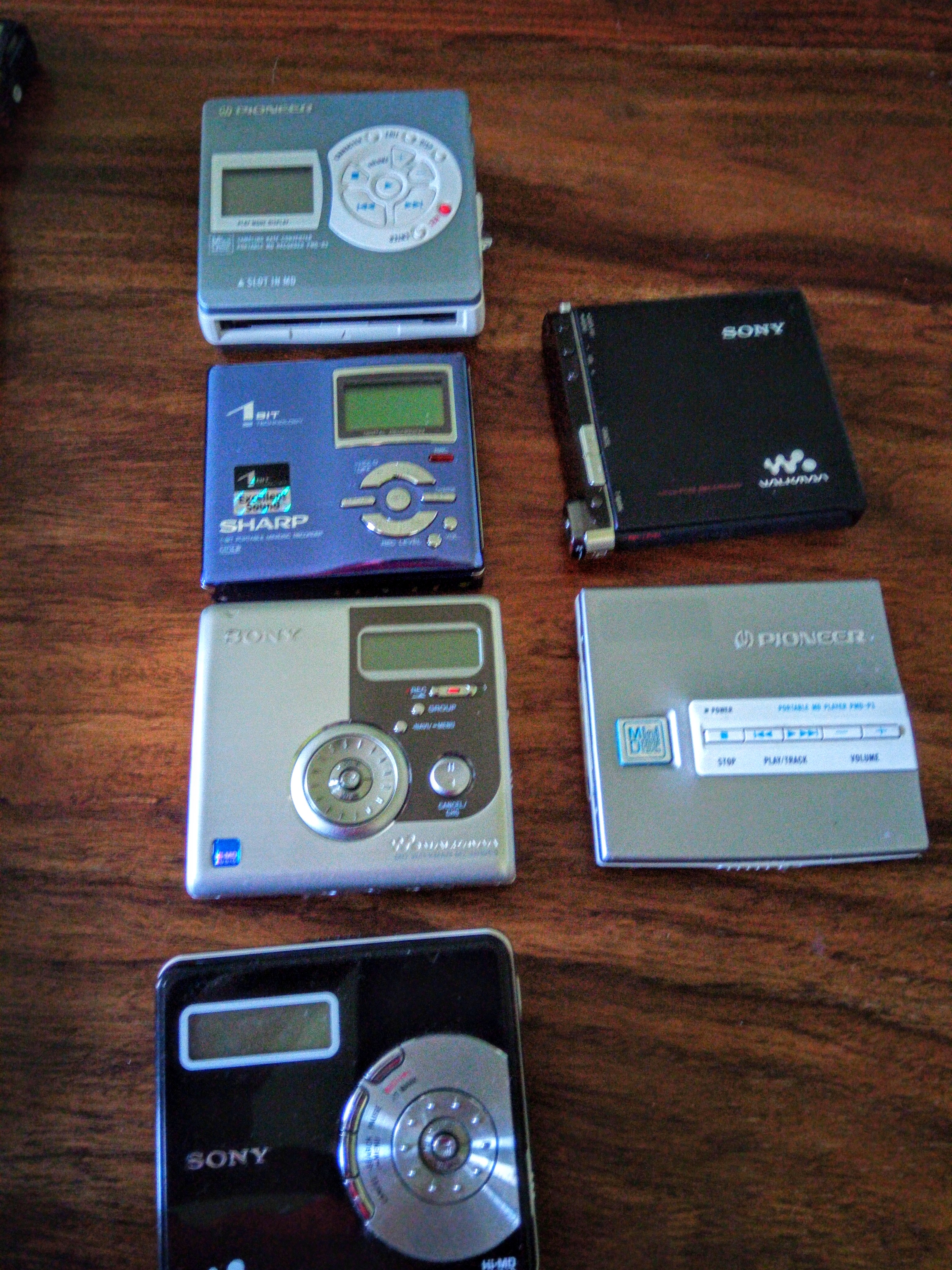The text below is verbatim from
my RMAA/Review of the Sony MZ-NH3D
RMAA: Sony MZ-B100 16-bit
RMAA: Panasonic SJ-MJ500 16-bit
RMAA: Kenwood DMC-S55 16-bit
RMAA: SHARP MD-DS8/9 16-BIT
RMAA: Sony MZ-E55 16-bit
Minidisc VLOG - 03: Hiss ranking
Minidisk VLOG - 02: Sharp MD-DS8/9
Minidisk VLOG - 01: Elegant lies
Earlier today I finished final edits to the Hi-Res interview conducted at Sony's HQ in Osaki, Tokyo. I met some of the coolest engineers this side of Tesla. And now I'm tapping out words about one of Sony's most convincing portable MD units. Technically, the MZ-NH3D is a recorder. It just doesn't record on the fly or in situ. Rather, you've got to connect it to an old Mac or Windows computer, faff around with the Devil's own, SonicStage, and
download into an MD. Think NetMD 2.0. And Hi-MD. Strange.
Whatever the fact, the NH3D is a pretty decent unit. Sure, it's got higher noise than an iPhone SE a
Sharp MD-DS8/9, or an
Astell&Kern AK380. Sure, its button array is seriously messed up. Sure, its styling is a bit serious for the format. And, like many late-model Sony MD units, it lacks digital MegaBass.
Sure.
But.
It's seriously awesome. Good battery life, decent load performance, great dynamic range, noise levels, and THD levels- each of which is enviable even today, when normalised for average listening volumes. It's from 2004 and from that skew, it holds its own with most of the big boys of today. That is, except for amp hiss. Electronic, power, and other circuit noise are completely absent from its headphone output. It's not got as rich a sound as, say, the
MZ-E55, but it's got a somewhat more layered, awe-inspiring sound that better shows off what 16-bit audio can do. It doesn't keep the incredible unloaded to loaded ratios that the
MZ-B100 does. But it easily surpasses the B100 where load effect isn't taken into account, and in some cases, where it is.
It's also got that typical Sony MD frequency response, with bass tipped up by 3dB to 20Hz and a drop right at the end. High-quality earphones at the time didn't do bass. Sony strongarmed bass into the signal with baked-in DSPs. It helped. It still sounds good - if not reference quality - today.
It's also made damn well. Mach-speed one-touch eject, solid edges, next to no body flex, beautiful brushed aluminium- all of it speaks to the efforts put into late-production Sony MD models to stand out from a rapidly commoditising MD and DAP market. Sony's first-gen flagship Hi-MD units were things of beauty.
As you can see below, RMAA thinks this unit the best of the MD bunch I've yet tested. It tests well and sounds good, but apart from hiss, I prefer the MZ-E55.
By percentages, unloaded deviation from RED BOOK 16-bit targets are as follows:
FR: +2,90dB; -0,98dB
Noise level: ~99,7%
Dynamic range dB (A): ~99,8%
THD, %: ~32x over target
IMD + Noise, %: ~12x over target
Stereo crosstalk, dB: ~70%
Source:
Sony MZ-NH3D Hi-MD downloader
ADC:
Lynx Studio HILO LT-TB
Computer: 2012 27" iMac
Cables: 1,5m Hosa Pro 3,5mm stereo to dual 3-pin XLR (around 8$); bespoke y-split 2,5 TRRS to dual 3-pin XLR made by
Musashi Sound Technology.
Loads:
NL - no load
SM2 - Earsonics SM2
ES7 - Audio Technica ES7
DT880 - Beyerdynamic DT880/600
16-bit VOL (Full) @+0dB - all targets
16-bit summary (Full) @+0dB - NL
End words
The NH3D is a great downloader. I don't get the genre. A recorder should record. Downloading to MD is painfully slow. And MD is all about recording. Whatever. Great unit. If you find one, get it. It performs up there, and is made to last.

















